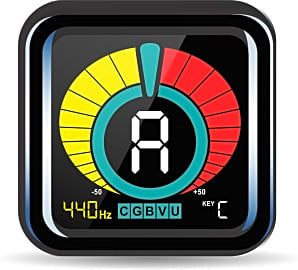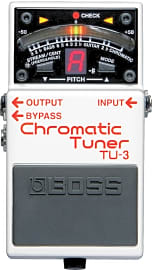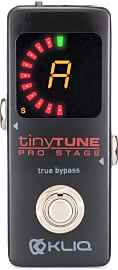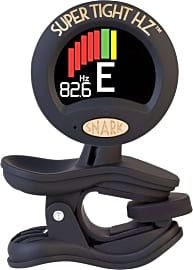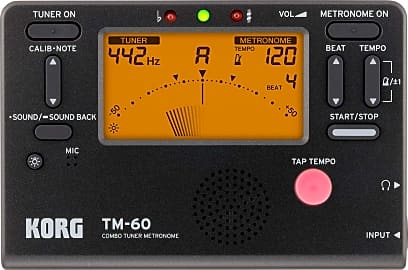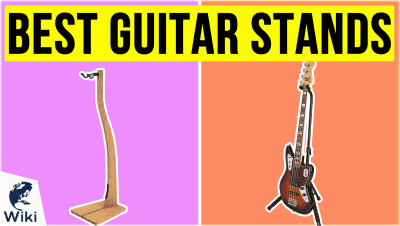The 10 Best Guitar Tuners

This wiki has been updated 43 times since it was first published in March of 2015. Whether you are a professional rocker or are just picking up an instrument for the first time, you can easily ensure you sound great with one of these guitar tuners. We've included portable models good for buskers and casual musicians through to heavy-duty offerings that boast incredible accuracy and are ideal for studio recording sessions and gigging in large venues. When users buy our independently chosen editorial selections, we may earn commissions to help fund the Wiki.
Editor's Notes
March 11, 2020:
A few of the models on our previous list were getting a little long in the tooth, and with continued advances in microporsessing offering faster and more accurate tuners, we wanted to upgrade those models a bit. All of those upgrades were kept in-house, like the Peterson StroboPlus SP-1, an outdated tabletop model that the company has left behind to pursue the development of clip-on and pedal-based models. Their pedal, the Peterson StroboStomp HD is probably the best option on the market for users who prefer strobe tuning and want something they can add to their pedalboards or set up next to a multi-effects unit.
Other upgrades came from Korg in their Korg TM60BK, which offers more calibration specificity than it predecessor, and from Snark, whose Snark ST-8HZ has had a hertz readout added to its display, making it a smart choice for anyone looking to create alternate tunings outside the traditional 12-tone scale.
You Can Tune A Guitar, But You Can't Tuna Fish
That accuracy comes from a digitized standard of something called A 440.
Imagine you've just taken the stage at Madison Square Garden. You're opening for somebody huge like a Bruce Springsteen or The Rolling Stones, and they've personally picked you as their opening act after seeing you at some dive bar in New Jersey.
Your drummer counts the band into your first song, a song about the great love of your life who got away, a song guaranteed to propel you into the league of immortal musicians. You strum the first chord...and your guitar is out of tune.
If you're fast on your feet and you have the good fortune of an understanding crowd, you can quickly chalk it up to rock 'n roll, get a little cheer from the audience, tune up, and restart. If they aren't feeling so generous, you might just get booed off stage, Mick Jagger shaking his head at you in shame as you depart the industry forever.
It's a nightmare scenario, and an unlikely one, but it illustrates the importance of having a quality tuner on your side.
What makes a quality tuner is accuracy and features, more than anything else. That accuracy comes from a digitized standard of something called A 440. At some point in the recorded history of music, the tone produced by a sound wave traveling with a wavelength of 440 Hz became the standard A on a western 12-tone musical scale.
When a signal comes into a tuner from your guitar, the tuner interprets that tone by its frequency as measured in hertz, and can safely assume which string you're targeting in a string-based mode, or tell you what note you're closest to in a chromatic mode.
Don't Bypass The Features
Let's return to the nightmare scenario from above and assume that you've actually been blessed with an understanding audience. In fact, the rock 'n roll gesture with which you accounted for your guitar's horrendous tuning actually made them feel like they were part of the show, like they were in on a private moment between you and them that anyone without a ticket didn't get.
Then, you go to tune your guitar before restarting the song, but you made the classic mistake of running your guitar through a channel that forces the audience to listen to the slow, agonizing sound of a guitar string gradually being tuned.
If you knew better, you'd have made sure that the tuner you purchased had a bypass channel that would silence your guitar while the tuner's in use.
If you knew better, you'd have made sure that the tuner you purchased had a bypass channel that would silence your guitar while the tuner's in use. That way, your ministrations would only torture the tuner itself, and not your potential fans.
But that's just one possible feature you can find on these tuners, and evaluating both the feature sets and the housings of the tuners on our list will quickly narrow your options down to just a few.
There are four types of tuners on our list, each of which has an advantage over the other. One tuner is quite possibly the simplest type, and it's the first tuner I ever used when playing guitar. It's a table-top tuner that sits on any surface and listens to your guitar through a small microphone on its body. It's a simple, inexpensive style that's great for new guitarists.
Another popular, inexpensive tuner for guitarists new and old is the head-mount type. This tuner attaches to the headstock of your guitar and uses the vibrations of the instrument to measure its tuning. These are fine units, but they don't automatically bypass your signal, so you have to remember to turn your guitar down in a live setting to keep your tuning process quiet.
The other two types are distinctly more professional, in the pedal box and rack-mounted styles. Unless you're running a very expensive live operation or a nice recording studio, rack mounted devices don't make a ton of sense. The average gigging guitarist doesn't want to lug that much extra hardware around, especially now that engineers can cram such high quality electronics into smaller pedals, many of which are wonderfully accurate and laden with features.
Frequently Setting The Standard
Before electronic tuning was an option, and before any actual standards existed for the designation of musical pitches, before Heinrich Hertz was ever born, there was the tuning fork and the pitch pipe. Both invented in the 18th century, these implements could set a momentary standard among instrumentalists gathered around the same one, but if you took a tuning fork from Germany and a pitch pipe from England in 1826, they would likely have had noticeably different frequencies.
In 1926, the music industry in America settled on 440 Hz as the proper frequency for A4.
After Hertz discovered and developed a system for measuring sound by its frequency, musical and scientific organizations argued about where to set the standard for musical tuning. Eventually, the governments of Austria and France agreed upon the measurement of 435 Hz for A4, or the fourth A on a standard piano.
In 1926, the music industry in America settled on 440 Hz as the proper frequency for A4. Ten years later, the American Standards Association agreed, followed in 1955 by the then relatively young International Organization for Standardization.
With this standard in place, manufacturers developed electronic tuners that compared a guitar's signal to the strobe frequency of a flashing light. In recent years, however, digital tuners have steadily replaced the strobe method, and proven more accurate and less expensive.


